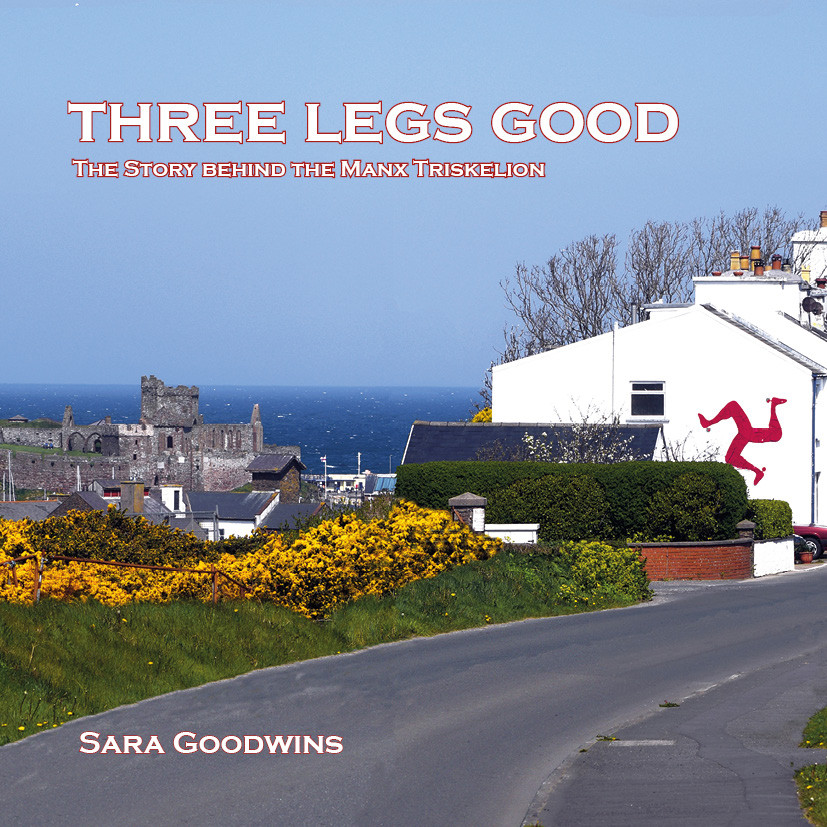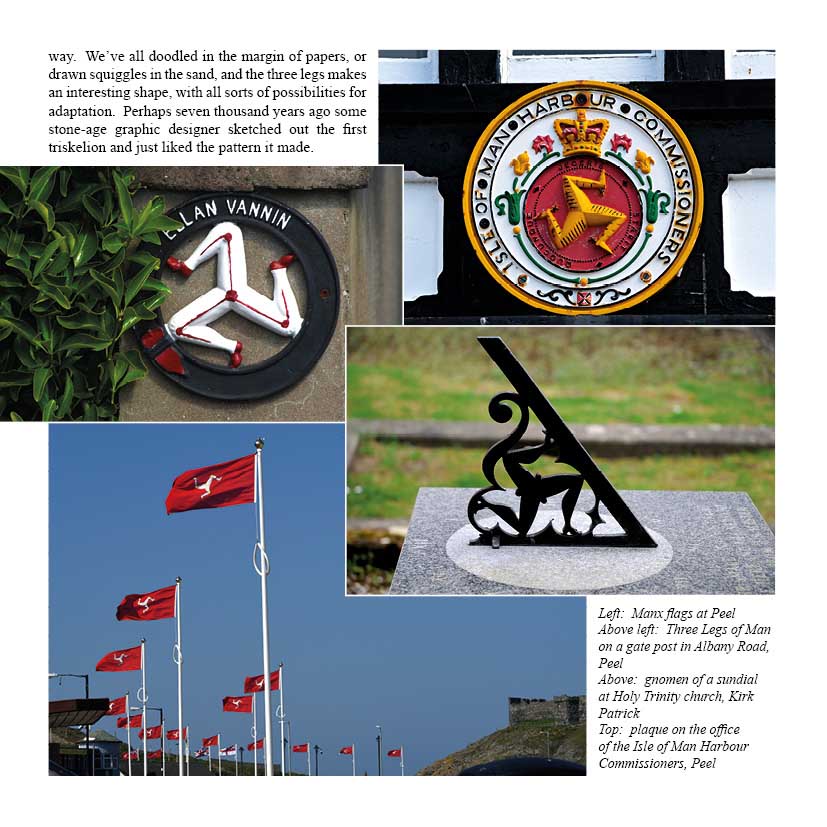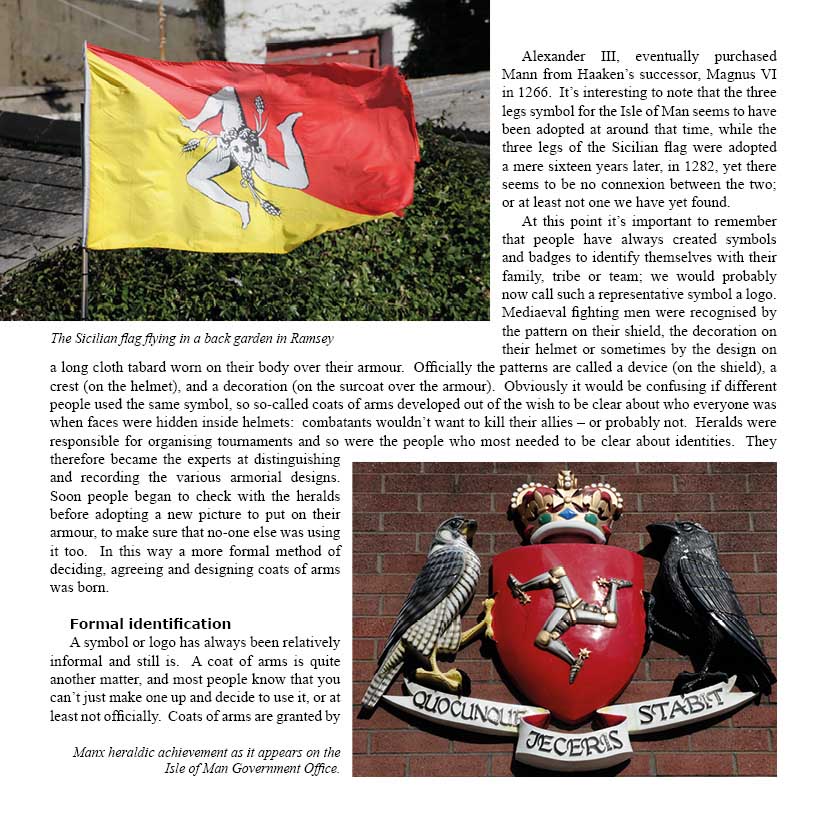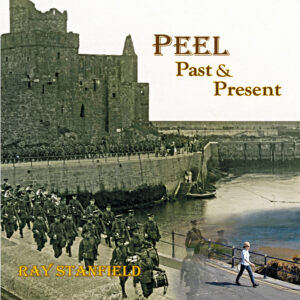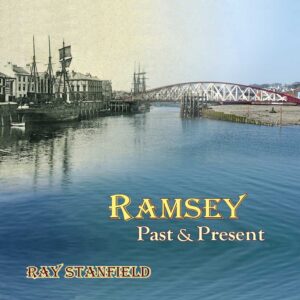Three Legs Good
£6.95
Written by Sara Goodwins
The story behind the Manx triskelion.
“Because it is the description and not a picture which determines what the coat of arms looks like, there can often be quite a bit of leeway in the different representations of it, all of which can nevertheless be correct.”
Three Legs Good, page 17
There are very few places where the national flag is displayed so often and so proudly as on the Isle of Man. The flag's emblem shows three human legs dressed in armour, joined at the hip, arranged as though running in a circle and usually displayed on a bright red background. The design is eye-catching, attractive but, to be truthful, slightly odd.
Painted on boats, reproduced in stained glass, carved in wood and cut out of metal, the three legs run all round their native island. Like all the best designs, the three legs lend themselves to reproduction in all sorts of shapes, sizes and colours.
Legends say that Manannan turned himself into a fiery wheel and ran down the hill to chase away the island's enemies. One tale even connects the three legs with a UFO. In fact, the symbol is a very old one with links to Ireland, Ancient Greece and the Far East. The Celts used it as a sun symbol and the Vikings, in typical Viking fashion, linked it with drinking. Three Legs Good celebrates the Manx triskelion but also explores the history of the symbol, its various meanings, and its different uses.
This was hard!
Sometimes you just make trouble for yourself don't you? We did when we decided to put together a booklet on the Three Legs of Man.
We didn't really think that sorting out the background of such a deceptively simple design would be easy - after all, no-one, as far as we knew, had done it before, and they surely would have done had it been a doddle. On the other hand, we didn't think it would be as hair-tearingly difficult as it turned out.
Nowadays people talk about global reach meaning that their logo can be recognised around the world. It's far from a modern idea. The triskelion probably started life several thousand years ago as a tri-spiral and, as such, is the Coca-Cola logo of the stone age. It gets everywhere. Korea, Switzerland, Tibet, Sicily... even the Native Americans used triskelia.
Our research took us from Shinto documents to Viking runestones and had us delve into everything from Buddhist theology to the work of Archibald Knox. We think the effort was worth it though. I hope you agree.
Now where's that recipe for hair restorer?
Copyright 2024 Loaghtan Books. All rights reserved.
